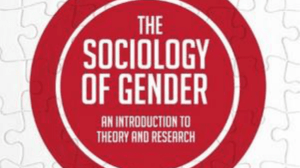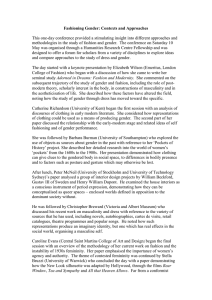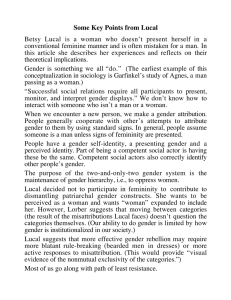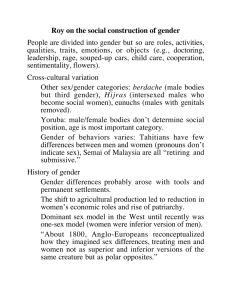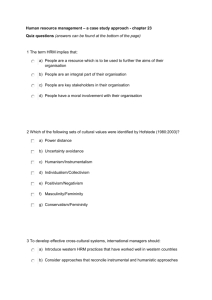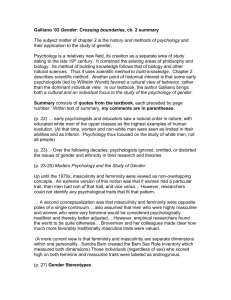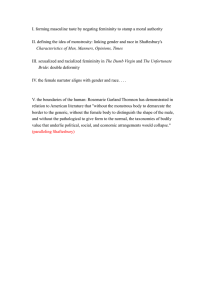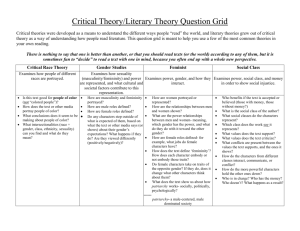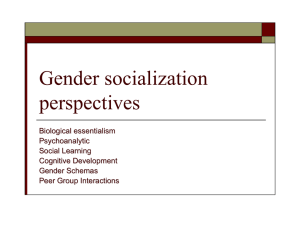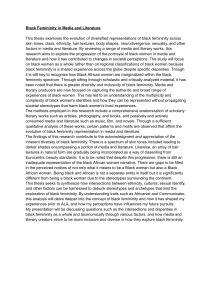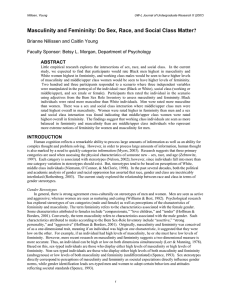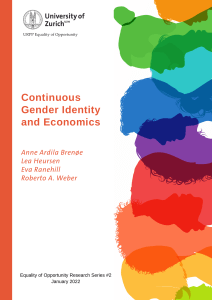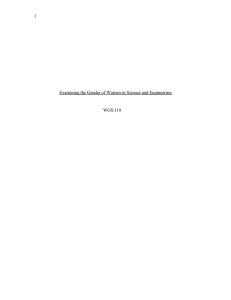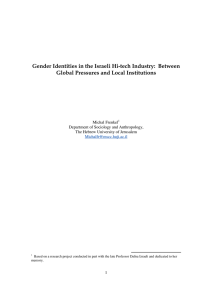File
advertisement
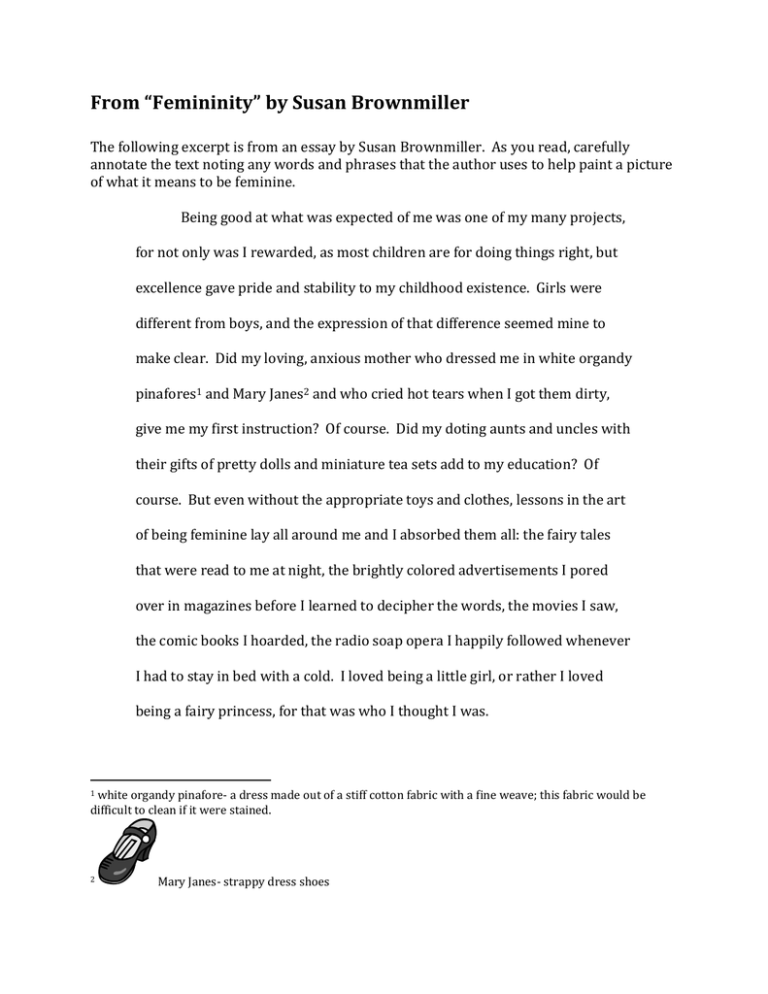
From “Femininity” by Susan Brownmiller The following excerpt is from an essay by Susan Brownmiller. As you read, carefully annotate the text noting any words and phrases that the author uses to help paint a picture of what it means to be feminine. Being good at what was expected of me was one of my many projects, for not only was I rewarded, as most children are for doing things right, but excellence gave pride and stability to my childhood existence. Girls were different from boys, and the expression of that difference seemed mine to make clear. Did my loving, anxious mother who dressed me in white organdy pinafores1 and Mary Janes2 and who cried hot tears when I got them dirty, give me my first instruction? Of course. Did my doting aunts and uncles with their gifts of pretty dolls and miniature tea sets add to my education? Of course. But even without the appropriate toys and clothes, lessons in the art of being feminine lay all around me and I absorbed them all: the fairy tales that were read to me at night, the brightly colored advertisements I pored over in magazines before I learned to decipher the words, the movies I saw, the comic books I hoarded, the radio soap opera I happily followed whenever I had to stay in bed with a cold. I loved being a little girl, or rather I loved being a fairy princess, for that was who I thought I was. white organdy pinafore- a dress made out of a stiff cotton fabric with a fine weave; this fabric would be difficult to clean if it were stained. 1 2 Mary Janes- strappy dress shoes From “Being a Man” by Paul Theroux There is a pathetic sentence in the chapter “Fetishism” in Dr. Norman Cameron’s book Personality Development and Psychopathology. It goes, “Fetishists are nearly always men; and their commonest fetish is a woman’s shoe.” I cannot read that sentence without thinking that it is just one more awful thing about being a man—and perhaps it is an important thing to know about us. I have always disliked being a man. The whole idea of manhood in America is pitiful, in my opinion. This version of masculinity is a little like having to wear an ill-fitting coat for one’s entire life (by contrast, I imagine femininity to be an oppressive sense of nakedness). Even the expression “Be a man!” strikes me as insulting and abusive. It means: Be stupid, be unfeeling, obedient, soldierly and stop thinking. Man means “manly” –how can one think about men without considering the terrible ambition of manliness? And yet it is part of every man’s life. It is a hideous and crippling lie; it not only insists on difference and connives at superiority, it is also by its very nature destructive—emotionally damaging and socially harmful. The youth who is subverted, as most are, into believing in the masculine ideal is effectively separated from women and he spends the rest of his life finding women a riddle and a nuisance. Of course, there is a female version of this male affliction. It begins with mothers encouraging little girls to say (to other adults) “Do you like my new dress?” In a sense, little girls are traditionally urged to please adults with a kind of coquettishness, while boys are enjoined to behave like monkeys towards each other. The nine-year old coquette proceeds to become womanish in a subtle power game in which she learns to be sexually indispensable, socially decorative and always alert to a man’s sense of inadequacy. Femininity—being lady-like—implies needing a man as witness and seducer; but masculinity celebrates the exclusive company of men. That is why it is so grotesque; and that is also why there is no manliness without inadequacy—because it denies men the natural friendship of women.
